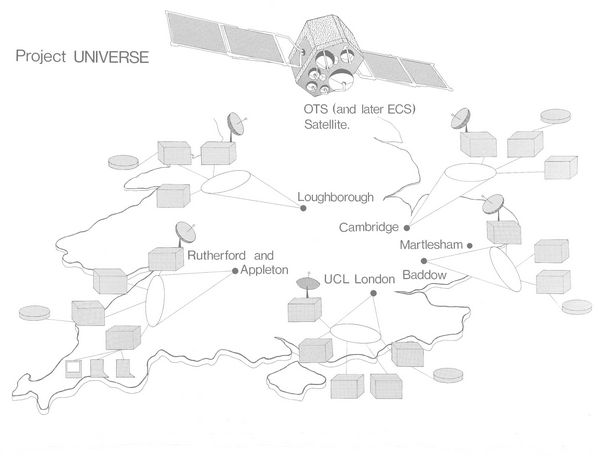

In December 1979, Council agreed to the establishment of a Working Party to undertake a wide-ranging review of the computing services provided by SERC and, in particular, to formulate a strategy for replacing the ageing mainframe computers at Chilton and Daresbury. The Working Party reported to the Council in May, recommending that within SERC there should be more central planning, coordination and control, to be achieved primarily through a restructuring of the committees dealing with computing, and that externally, collaboration with the Computer Board should be continued and strengthened.
A new Central Computing Committee has since begun operation which will bring together the batch-processing interests of the former Facility Committee for Computing and the resources of the Interactive Computing Facility. Council's internal management arrangements have been similarly strengthened with the appointment of a Computing Coordinator - presently Dr G Manning - who is supported by a panel comprised of the computer managers at the various establishments.
The Working Party recommended a phased programme of capital installations at the two major Laboratories, with the first priority being the replacement of the 370/165 at Daresbury. (see page 21). The requirements at Chilton were for an urgent improvement in the service to terminal users, necessitating the replacement or up-grading of the 3032 and, later, an additional machine to provide further front-end capacity and partially to replace the 195s. Further back-end capacity would be needed to provide for the 10% pa growth in use envisaged by the Working Party. It was felt that the scale of provision should be closely geared to the scientific needs of the Council's programme and that a system of apportioning central computing costs to Boards should be introduced as soon as possible.
Council endorsed the Working Party's recommendations which are being put into effect as rapidly as the availability of funds allows.

A major national demonstration facility in communication between computers via satellite has been established by a consortium involving Government, academe and industry. Those involved in project UNIVERSE are British Telecom, Cambridge University, the Department of Industry, GEC-Marconi Electronics Ltd, Logica Ltd, Loughborough University of Technology, SERC and University College London. The cost of the project over three years will be approximately £3 million, shared between DoI, SERC, British Telecom, GEC-Marconi and Logica.
The combination in project UNIVERSE of ground-based Cambridge Rings (local networks) with satellite links will form a powerful new technique for high bandwidth transmission of data between computers which is of increasing importance to industry, business and scientific research. Project UNIVERSE will enable UK scientists to gain valuable experience in operating such a computer system and will provide a national demonstration facility to show to potential overseas customers with the promise of export orders and UK sales for the participating industrial companies. The scheme was first conceived at SERC's Rutherford Appleton Laboratory (RAL) and initially proposed as a joint research project with the universities (UNIVERSE stands for UNIVersities Expanded Ring and Satellite Experiment). The project was quickly extended when GEC-Marconi Electronics, Logica and British Telecom agreed to join.
Six earth stations in the UK will each be equipped with a 3m diameter dish aerial, 14 GHz radio transmitter and 11 GHz receiver. Together these will provide a two-way link from each site to the Orbital Test Satellite (OTS). This satellite, operated by the European Space Agency, is positioned in a geostationary orbit 36,000 km above the Equator over Gabon. The six stations will be sited at the universities of Cambridge and Loughborough; University College London; Marconi Research Laboratories at Chelmsford, Essex; British Telecom Research Laboratory at Martlesham Heath, Suffolk, and RAL at Chilton, Oxfordshire.
Further information can be obtained from Dr David Thomas (extension 6660) or Mr John Burren (extension 6331) at RAL (Chilton), telephone Abingdon (0235) 21900.